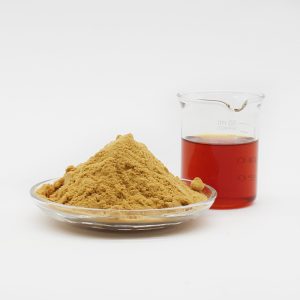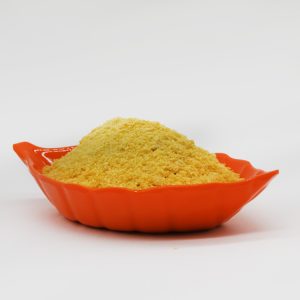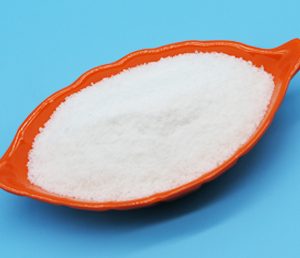Product Description:
Polyacrylamide is divided into cationic polyacrylamide(CPAM), anionic polyacrylamide(APAM) and nonionic polyacrylamide(NPAM). Nonionic polyacrylamide is a water-soluble polymer or polyelectrolyte. Because its molecular chain contains a certain number of polar groups, it can absorb solid particles suspended in water to bridge between particles or agglomerate particles to form large flocs through charge neutralization. Therefore, it can accelerate the settling of particles in the suspension, and has a very obvious effect of accelerating solution clarification and promoting filtration. It is mainly used for flocculation and sedimentation of various industrial wastewater, and sedimentation and clarification treatment. Such as papermaking and pulp wastewater treatment, wastewater treatment in mineral processing and metal smelting process, wastewater treatment in steel mills and stone processing plants, etc.

| No. | ITEM | UNIT | STANDARD | RESULT | |
| 1 | Appearance | White powder | White powder | ||
| 2 | Molecular weight | — | Medium | Medium | |
| 3 | Degree of hydrolysis | % | Very low | Very low | |
| 4 | Solid content | % | ≥90.0 | 91.7 | |
| 5 | Acrylamide monomer content | % | ≤0.02 | 0.02 | |
| 6 | Dissolution time | min | ≤90 | 80 | |
| 7 | Water insoluble | % | ≤0.3 | 0.2 | |
Application Fields:
1. As a flocculant, it is mainly used in the solid-liquid separation process in the industry, including sedimentation, clarification, concentration and sludge dehydration. The main industries used are urban sewage treatment, paper industry, food processing industry, petrochemical industry, Wastewater treatment in the metallurgical industry, mineral processing industry, dyeing industry, sugar industry and various industries. It is used in sludge precipitation and sludge dewatering in urban sewage and meat, poultry, and food processing wastewater treatment. It can neutralize the negatively charged organic colloids in the sludge through the positively charged groups contained in it. The excellent bridging and coagulation function of polymers promotes the aggregation of colloidal particles into large flocs, which are separated from their suspensions. The effect is obvious, and the dosage is small.
2. In the paper industry, it can be used as paper dry strength agent, retention aid, and filter aid, which can greatly improve the quality of paper, save costs, and increase the production capacity of paper mills. It can directly act as an electrostatic bridge with inorganic salt ions, fibers and other organic polymers to enhance the physical strength of paper, reduce the loss of fibers or fillers, speed up water filtration, and play the role of reinforcement, retention and drainage. It can also be used for White water treatment, at the same time, can play an obvious flocculation effect in the deinking process.
3. In fiber mud (asbestos-cement products), the drainage of formed asbestos-cement products can be improved, and the strength of asbestos board blanks can be improved; in insulating boards, the bonding ability of additives and fibers can be improved.
4. It can be used as a clarifying agent for mine wastewater and coal washing wastewater in mining and coal preparation industries.
5. It can be used in the treatment of dyeing wastewater, leather wastewater, and oily wastewater to remove turbidity and decolorize it to meet the discharge standard.
6. In the purification of phosphoric acid, it is helpful for the separation of gypsum in the wet phosphoric acid process.
7. Used as a flocculant for water treatment in waterworks that use river water as the source.
During use, it is sometimes used together with cationic polyacrylamide, anionic polyacrylamide, polyaluminum chloride(industrial grade PAC or drinking water grade PAC) and PFS Polymeric Ferric Sulfate according to the situation.

Function:
Nonionic polyacrylamide has a strong flocculation effect because it has:
1. Clarification and purification;
2. Sedimentation promotion;
3. Filtration promotion;
4. Thickening and other functions.
In waste liquid treatment, sludge concentration and dehydration, mineral processing, coal washing, paper making, etc., it can fully meet the requirements of various fields.
How To Use:
1. Granular polyacrylamide flocculants cannot be directly added to sewage. It must be dissolved in water before use, and its aqueous solution is used to treat sewage.
2. The water used to dissolve granular polymers should be clean (such as tap water), not sewage. Normal-temperature water is enough and generally does not need to be heated. The water temperature is lower than 5°C and the dissolution is very slow. Increasing the water temperature increases the dissolution rate, but above 40°C will accelerate the degradation of the polymer and affect the use effect. Generally, tap water is suitable for preparing polymer solutions. Water with strong acid, strong alkali and high salt content is not suitable for preparation.
3. The concentration of the polymer solution is recommended to be 0.1%-0.3%, that is, add 0.1g-0.3g polymer powder to 1 liter of water.
Advantages:
The advantages of non-ionic polyacrylamide are mainly used as flocculants. Because its molecular chain contains a certain amount of polar genes, it can absorb solid particles suspended in water and bridge between particles to form large flocs. Non-ionic polyacrylamide can accelerate the settling of particles in the suspension, and has a very obvious effect of accelerating the clarification of the solution and promoting filtration. It is widely used in the treatment of chemical industrial wastewater and waste liquid, and municipal sewage treatment. Especially when the sewage is acidic, it is most suitable to use this product. It can be used in conjunction with inorganic flocculant polyiron, polyaluminum and other inorganic salts.





